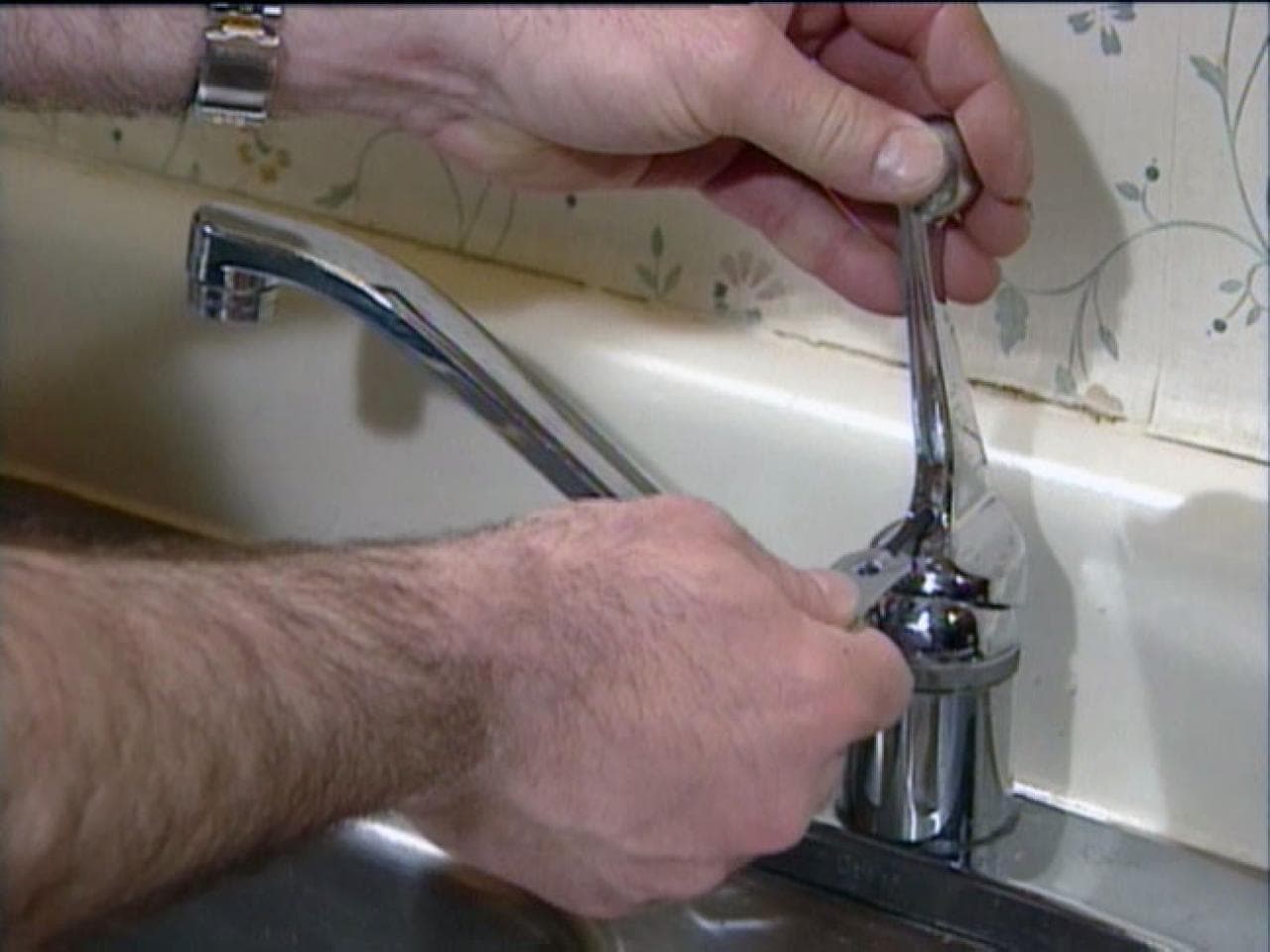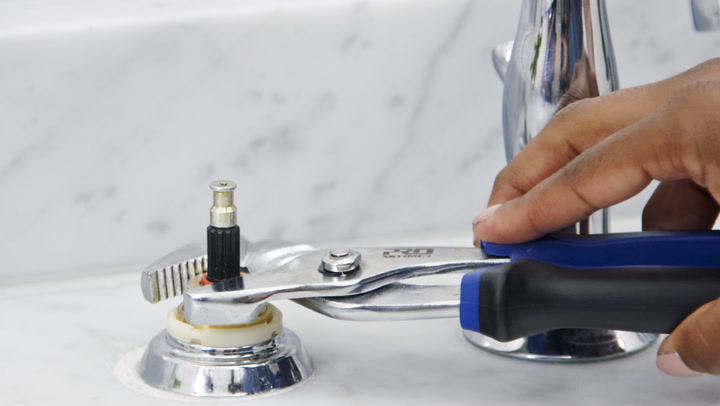We have found this article involving Should I Repair or Replace a Leaky Faucet? below on the web and decided it made good sense to relate it with you here.

Trickling taps may appear like a small trouble, yet their influence surpasses simply the inconvenience of the noise. From wasting water to sustaining unneeded monetary costs and wellness risks, disregarding a leaking tap can bring about various consequences. In this short article, we'll explore why it's vital to resolve this typical family problem immediately and successfully.
Waste of Water
Environmental Effect
Dripping faucets add dramatically to water wastefulness. According to the Epa (EPA), a single faucet trickling at one drip per secondly can throw away greater than 3,000 gallons of water annually. This not only strains water sources but likewise influences ecosystems and wildlife dependent on them.
Financial Prices
Boosted Water Expenses
Beyond the ecological impact, trickling faucets can blow up water bills considerably. The collected wastage gradually converts into greater utility expenditures, which might have been stayed clear of with timely repair services.
Possible Residential Property Damages
Furthermore, prolonged trickling can cause harm to fixtures and surfaces bordering the tap. Water buildup can cause staining, rust, and also architectural concerns if left neglected, causing additional repair work prices.
Wellness Problems
Mold And Mildew and Mold Development
The consistent visibility of dampness from a trickling tap produces an excellent setting for mold and mildew and mildew growth. These fungi not only compromise interior air top quality however likewise pose wellness threats, especially for individuals with respiratory system problems or allergies.
Waterborne Diseases
Stationary water in leaking faucets can come to be a breeding place for bacteria and various other microorganisms, raising the danger of waterborne diseases. Pollutants such as Legionella bacteria prosper in stagnant water, possibly resulting in serious health problems when consumed or inhaled.
Do it yourself vs. Professional Repair service
Pros and Cons of DIY Fixing
While some may attempt to take care of a trickling faucet themselves, DIY fixings come with their own collection of obstacles. Without correct knowledge and tools, DIY attempts can worsen the concern or bring about insufficient repairs, extending the issue.
Benefits of Employing an Expert Plumber
Employing an expert plumber guarantees that the underlying reason for the leaking faucet is resolved properly. Plumbing professionals have the proficiency and equipment to detect and fix faucet issues successfully, saving time and minimizing the threat of additional damage.
Step-by-Step Overview to Taking Care Of a Dripping Faucet
Devices Needed
Prior to trying to repair a dripping tap, gather the essential tools, consisting of an adjustable wrench, screwdrivers, substitute parts (such as washing machines or cartridges), and plumber's tape.
Common Tap Issues and Their Solutions
Identify the kind of tap and the specific problem causing the drip. Typical troubles consist of worn-out washers, rusty shutoff seats, or defective O-rings. Describe producer directions or on-line tutorials for step-by-step assistance on repair services.
Safety nets
Normal Upkeep Tips
To prevent dripping faucets, carry out routine upkeep such as cleansing aerators, evaluating for leaks, and changing damaged components without delay. In addition, take into consideration mounting water-saving tools or updating to extra reliable components.
Significance of Prompt Fixes
Attending to leaking faucets as soon as they're seen stops additional water wastage and possible damages, eventually saving both water and cash in the long run.
Impact on Residential Property Value
Assumption of Well-Maintained Residential Property
Maintaining a residential or commercial property in good condition, consisting of dealing with upkeep issues like trickling faucets, improves its regarded value and charm among prospective buyers or renters.
Impact on Resale Value
Qualities with well-maintained plumbing fixtures, consisting of taps, command greater resale values in the real estate market. Attending to trickling taps can contribute to a positive impression throughout property evaluations and settlements.
Environmental Obligation
Private Contribution to Conservation
Taking obligation for repairing leaking faucets aligns with broader efforts towards water preservation and ecological sustainability. Every individual's actions collectively make a significant influence on protecting priceless resources.
Lasting Living Practices
By focusing on punctual repair work and adopting water-saving routines, people contribute to sustainable living methods that profit both present and future generations.
Final thought
Attending to a dripping faucet exceeds plain convenience; it's a necessary step towards conserving water, lowering monetary prices, and protecting wellness and building. Whether through do it yourself repairs or professional help, taking action to repair trickling taps is a small yet impactful method to advertise liable stewardship of resources and contribute to a healthier, a lot more lasting future.
How to Fix a Dripping or Leaky Faucet
A leaking faucet is one of the most common problems that homeowners encounter, but it being commonplace doesn’t make it any less annoying. The constant drip drip drip of a leaking bathtub faucet, showerhead, or sink tap can disturb your home’s serenity. Left neglected, a dripping faucet can also result in higher water bills and discoloration or mold growth in your sink or plumbing fixtures.
Fortunately, you don’t have to be a trained plumber to know how to stop a dripping faucet. With some basic tools, replacement parts, and a little patience, leaky faucet repair is a breeze. In this article, we’ll explain what causes dripping faucets and how you can fix them.
What Causes a Leaking Faucet?
Kitchen and bathroom faucets come in all manner of designs, but most involve some combination of valves, O-rings, seals, and washers. The O-ring is usually the weakest link, but any one of these pieces can wear down over time. Heat, moisture, temperature fluctuations, minerals, mold, and movement can contribute to warping and corrosion, breaking the watertight seal. This just comes with the territory of being a homeowner. Everything is always subject to wear and tear, and some component parts of your appliances and fixtures need to be replaced on occasion. At least replacement O-rings are cheap!
More rarely, dripping faucets can be a symptom of excessively high water pressure. Were this the case in your home, you would probably notice that the leak is not isolated to one faucet. Water pressure issues are harder to resolve on your own. We recommend contacting a professional plumber if you suspect your water pressure is too high.
How to Fix a Dripping Faucet
Pipe wrench or monkey wrench Allen wrench set Screwdrivers Old towel or rag Shut off the water.
Before you do anything, you need to turn off the water to keep from drenching your kitchen or bathroom. You should find a valve under the sink and against the wall. Once you’ve turned this valve, try turning the faucet on to confirm that the water source has been cut off.
If you can’t locate your local valve for the faucet you’re working on, you can always shut off the water to the house at the main valve. Of course, this will prohibit anyone from using the sinks, showers, or toilets while you’re working on the faucet that’s giving you trouble.
Plug or block the drain.
You’ll be disassembling the faucet and removing some small bits of hardware. Plug the drain with a stopper or rag to avoid the possibility of a small screw falling into your P-trap.
Take apart the faucet assembly.
There are several varieties of kitchen and bathroom faucets, each with its own manner of assembly. For detailed instructions on how to disassemble your faucet, you can refer to the fixture’s manual or contact the manufacturer. If you know whether you have a ball, disc, cartridge, or compression faucet, you can find detailed schematics online.
In general, you need to begin by removing the faucet handles. You might notice a small screw that you’ll need to remove with a screwdriver or Allen wrench. If you don’t see any visible securing hardware, it’s likely hidden under a decorative cap that can be unscrewed or popped off with flathead screwdriver.
Remove each piece methodically, consulting a schematic when necessary. Take notes or arrange the pieces in such a way to make it easier to correctly reassemble the faucet later.
Remove the cartridge.
Once you’ve removed the handles and securing hardware, you should be able to remove the valve cartridge or stem. Some cartridges will slide right out. Other faucet models will require you to loosen a nut with a pipe wrench before you can remove the valve stem.
Examine the exposed hardware.
With the cartridge or stem removed, inspect the component parts. Check the rubber O-rings for wear and tear. Also examine the seat washer for corrosion or other damage. These pieces are usually the responsible parties for a dripping faucet, but it’s worth inspecting the other component parts while you have the faucet disassembled.
Find replacement parts.
Once you’ve identified which faucet component has failed, find an identical replacement. Your local hardware store should have O-rings, seat washers, and other standard components in stock. If you have a luxury or uncommon faucet, you may have to contact the manufacturer for a replacement part.
It’s a good idea to take your old parts with you to the hardware store so you can compare them with the store’s inventory and be sure you’re purchasing the correct replacement.
Reassemble the faucet.
With your new parts in hand, reconstruct the faucet and handles. Don’t be tempted to overtighten screws or nuts. You might think this could create a better seal, but it can instead damage or bend a delicate part of the assembly and create a new problem for you.
Turn on the water and test the faucet.
The only thing left to do is test your work. Unplug the sink, turn the water back on, and try the faucet. Congratulate yourself on a job well done!
https://www.libertyhomeguard.com/how-to-fix-a-dripping-or-leaky-faucet/

I came across that article about Water Dripping from Faucet: Why and How to Fix while doing a search on the search engines. Do you know about another person who is fascinated by the topic? Why not promote it. Thanks so much for going through it.